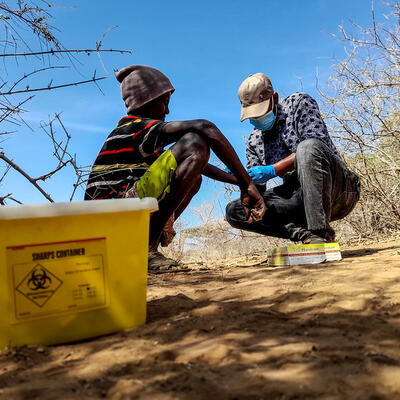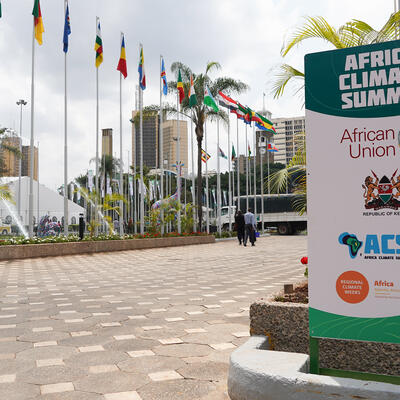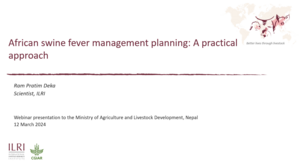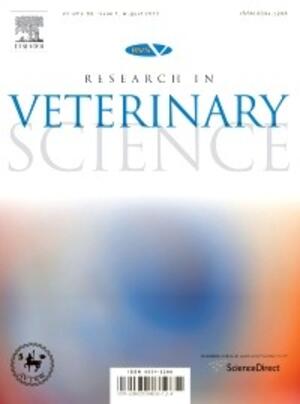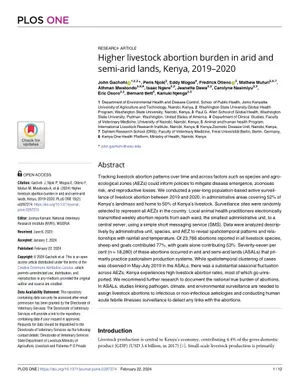
The United States Department of Agriculture joins the global race to control contagious bovine pleuropneumonia
The animal and human health staff at the International Livestock Research Institute (ILRI) are top notch experts in the field of livestock diseases endemic in the African continent.
ILRI is one of the few centres in the world focused on research on Mycoplasma mycoides, the bacteria responsible for the respiratory disease called contagious bovine pleuropneumonia (CBPP) in cattle.
In 2020, the United States of America congress mandated that the United States Department of Agriculture (USDA) Agricultural Research Service (ARS) conducts research to create tools to prevent CBPP, underpinning a proactive strategy to safeguard against the re-emergence of a disease that had previously been eradicated from the country.
This work is being conducted as a collaboration between two American research teams, one led by Steve Geary from the University of Connecticut and the other by Eduardo Casas from USDA ARS.
The objective of both teams is to develop a more effective vaccine to prevent any potential spread of the disease in their country.
Recognizing the expertise of ILRI and the Kenya Agricultural and Livestock Research Organization (KALRO), the USDA has fostered partnerships with both.
These collaborations were strengthened in 2023 through reciprocal visits: ILRI to the USDA in Iowa in April, the University of Connecticut to ILRI in August, and the USDA’s National Animal Disease Center (NADC) to ILRI and KALRO in September.
Scientists at ILRI have been carrying out research on CBPP for almost 20 years, mainly on vaccines to control the spread of the disease.
One of the major challenges in the quest to develop a vaccine for CBPP has been the limited understanding of the host’s protective immune responses and the bacterial proteins responsible for eliciting them. Partnerships with other organizations also conducting research in this area are therefore key.
‘We have brought two amazing groups together whose common interest is to combat CBPP and control the disease as much as we can,’ said USDA supervisory research animal scientist Eduardo Casas.
CBPP originated in Europe and spread to different parts of the world several hundred years ago. The World Organisation for Animal Health describes it as the cause of one of the ‘three great historic cattle plagues of the world along with foot and mouth disease and rinderpest’.
The disease is airborne and highly contagious among cattle. Symptoms of the disease include fever, respiratory distress, anorexia, pneumonia and inflammation of the lungs, sometimes leading to death.
While the United States of America, Australia and most countries in Europe have managed to control CBPP through a slaughter and vaccine approach, Africa continues to battle the disease since its arrival on the continent in 1853.
The effects of the disease have been detrimental. A research study in 2006 found that CBPP infections caused losses totalling 47.2 million United States dollars across 12 sub-Saharan African countries.
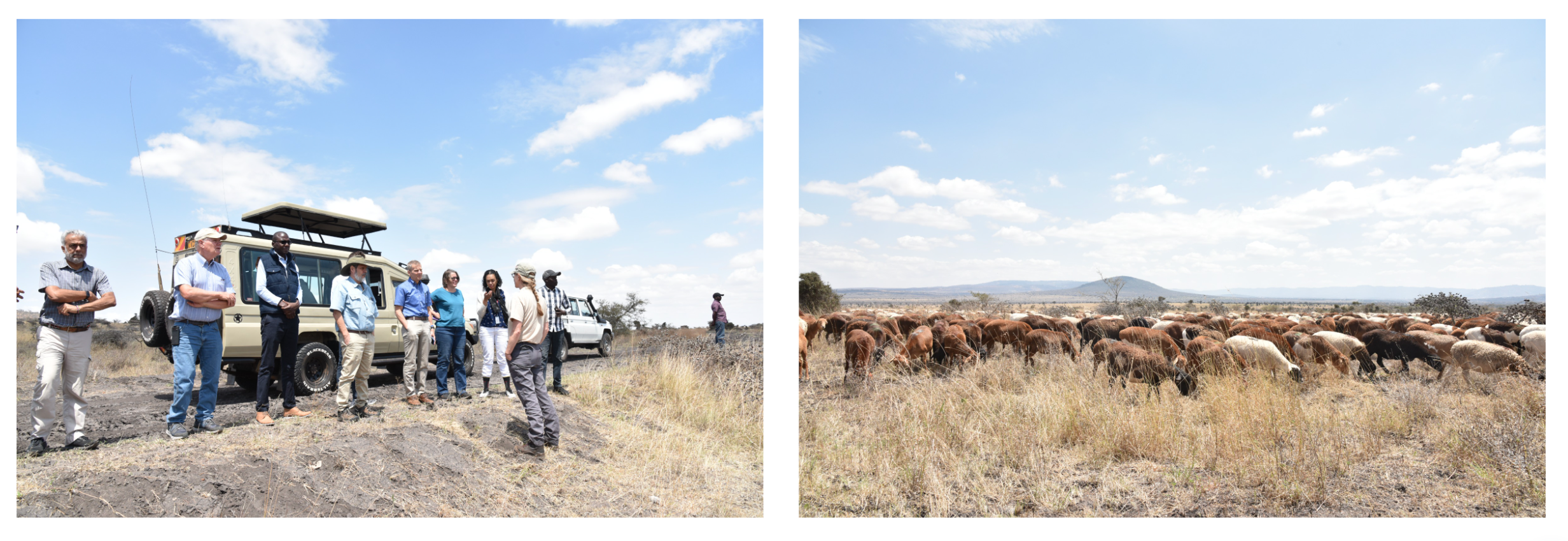
The USDA and ILRI teams discussed opportunities for collaboration on CBPP, with several potential areas of focus:
- Improved diagnostics: Development of new improved CBPP diagnostic tests.
- Vaccine testing: The NADC team has developed a candidate CBPP vaccine and are ready to test it. Since the pathogen is not present in the United States of America, USDA staff are considering conducting testing in Kenya with KALRO.
- Transposon library: Scientists at ILRI are studying how Mycoplasma mycoides survive in the host's body by studying immune dysregulation, which refers to the body's immune system not functioning correctly. They created a 'transposon library' of more than 3000 clones, each with one mutated Mycoplasma mycoides gene. By adding these mutants to the host, they can identify the genes that are causing immune dysregulation. Once these genes are pinpointed, scientists can develop vaccines targeting them.
The transposon library holds much potential for collaboration, described by senior scientist Elise Schieck as ‘a versatile tool for studying host-pathogen interactions.’ She said, ‘it could hold the key to further our understanding of the bacteria and how to tackle the disease more effectively.’
As part of the visit, the USDA, KALRO and ILRI teams visited Kapiti, ILRI’s research and conservation centre located about an hour’s drive south of Nairobi.
‘We are excited about this collaboration as we hope it will raise the visibility of CBPP and lead to greater funding on research to control the spread of this disease,’ said Schieck, who has been leading ILRI’s CBPP research since 2018. ‘It would also be a win for our work on the neglected diseases that don’t receive enough global attention but that are impacting smallholder farmers in lower- and middle-income countries.’
The USDA team left with strengthened relationships and understandings of how the teams can support each other and will have future discussions to identify next steps.
USDA team: Daniel Nielsen, Eduardo Casas, Mark Ackerman, Robert Briggs and Rohana Dassanayake
ILRI team: Angela Makumi, Elise Schieck, Hussein Abkallo, Musa Mulongo, Noah Okumu, Vish Nene and Winnie Chebore
Photos by: Kristen Tam









